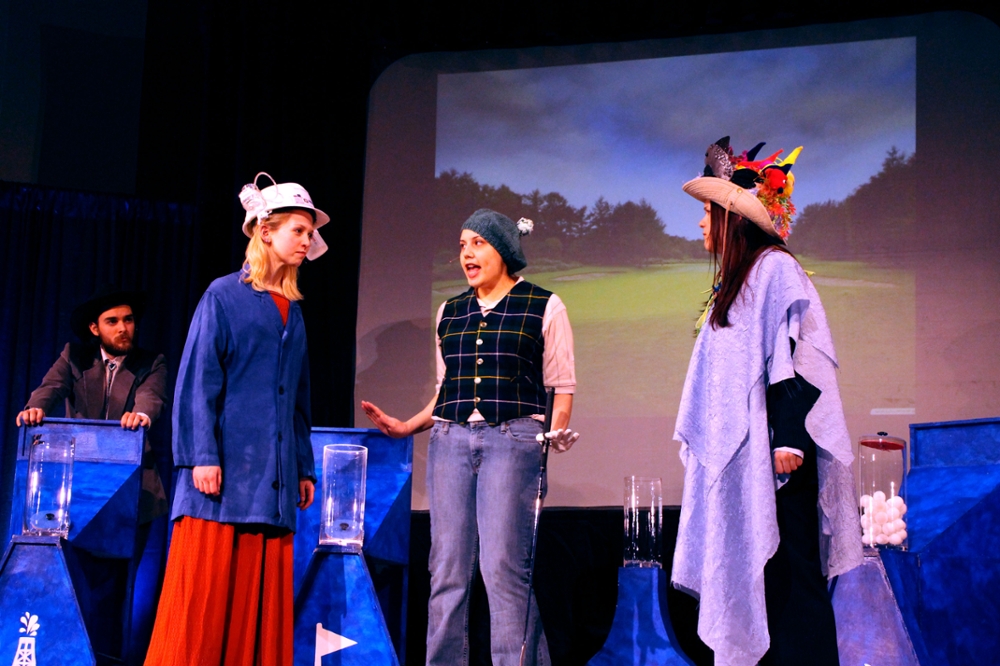
Downstream Drama
In February 2014, GIWS and the U of S Department of Drama took research results to the stage with an interactive play, Downstream. Now, researchers are hoping to develop a blueprint that could be used to mobilize research knowledge for a variety of disciplines.
It doesn’t get any more interdiscplinary than this: a collaboration between GIWS and the U of S Department of Drama is demonstrating how fine arts can be used to communicate water research results in an engaging and interactive way.
As part of the socio-hydrology research theme, GIWS toured a play throughout Saskatchewan and Alberta February 17 – 24. The production, titled Downstream, was developed with the Department of Drama and the School of Environment and Sustainability (SENS). The piece built on a series of workshops held in 2012 that used multiple social science methods to gather views on water security from those working in or with an interest in water stewardship.
“Downstream is an innovative way to convey research knowledge and get people to consider how they might use that knowledge,” said Graham Strickert, a research associate with GIWS and the Changing Cold Regions Network, and project lead. “The play used a style called forum theatre that invited audience members to make decisions as the story progressed. For example, should authorities breach a levee and flood land to save a community downstream? Who bears the consequences of decisions made upstream?”
The play was written by U of S playwright-in-residence, Kenneth T. Williams and directed by Natasha Martina, associate professor (Drama). Major funding was provided by the Social Sciences and Humanities Research Council (SSHRC) Connection Grant.
Downstream took a slightly satirical look at how water management plans are created using statements, feedback and observations gathered from workshop participants. Following the performance, audience members were invited to give feedback about research results and also the drama production as a communications format. The cast was comprised entirely of student actors from the Department of Drama.
The research team is analysing the audience flood mitigation choices and focus group results and preparing their final report. Strickert says next steps involve looking for interested partners and funding sources to develop a ‘blueprint’ that could be used to mobilize research knowledge through the performing arts for a variety of disciplines.
“Downstream is a really novel collaboration, and the whole production would not have been possible without the hard work and dedication of the Department of Drama, which met some seemingly impossible timelines to make this a reality,” said Strickert.
“The fine arts present a huge opportunity to mobilize research results. We’re finding that the play was a really effective way to prime our focus groups and get people talking about the core issues of water governance.”
Downstream Project Team:
- Principle Investigator: Graham Strickert
- Co-Applicant: Natasha Martina, Department of Drama, Director of Downstream
- Collaborator: Douglas Clark, SENS
- Partner (in-kind donations): Gregory Marion, Department of Drama (Greystone Theater)
- Project Coordinator: Lori Bradford, SENS
- Assistant Director: Christopher Donlevy
- Sound Design: Kody Manson
- Stage Manager: Jillian Borrowman
- Actors: Kashtin Moen, Jenna Berenbaum, Lauren Younghusband, Kelly McTaggart, Phil Munson, Jesse Fulcher Gagnon, Andrea Folster
- Design, set and costume team: Carla Orosz, Iain Rose, Beverley Kobelsky
